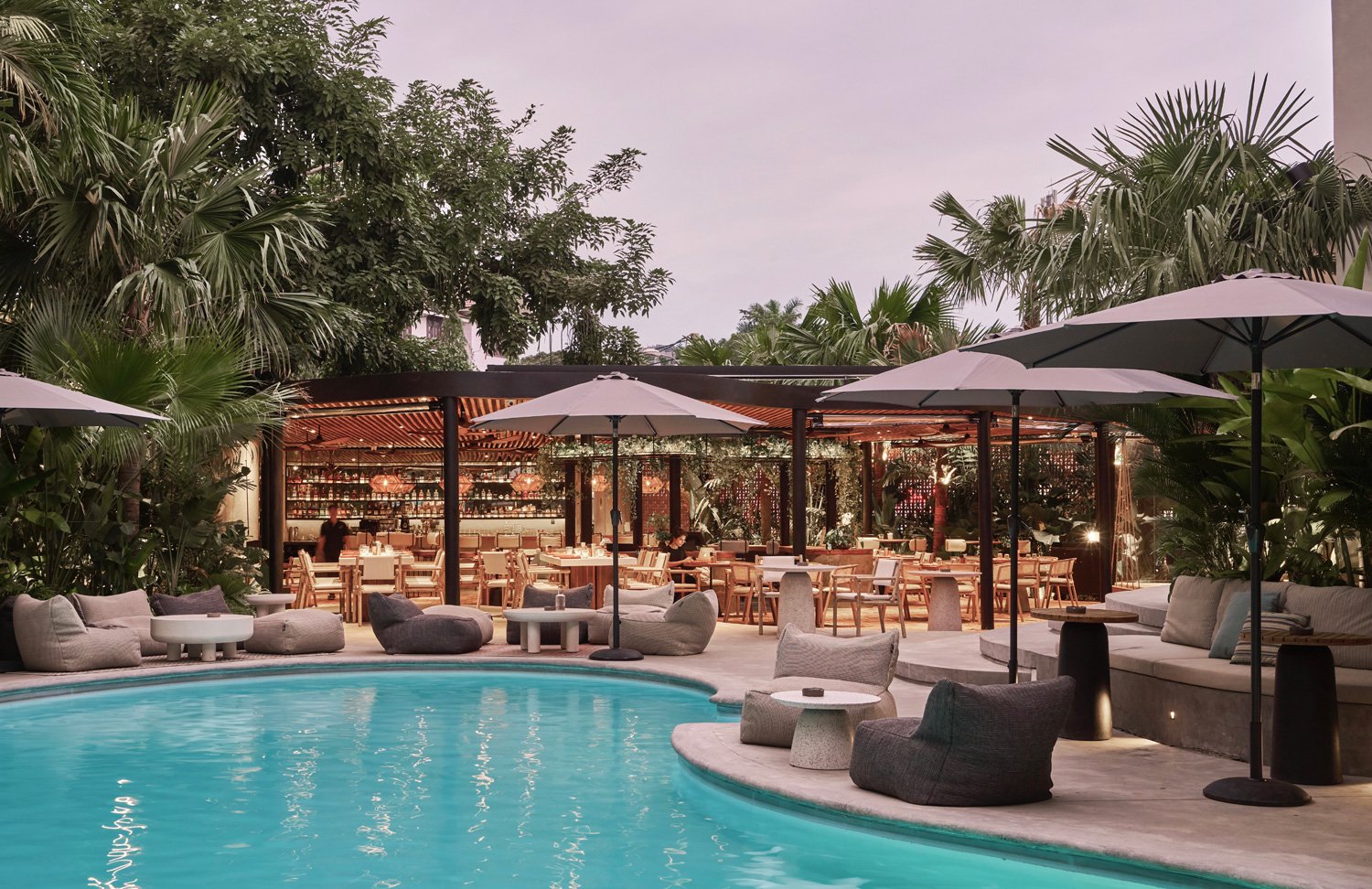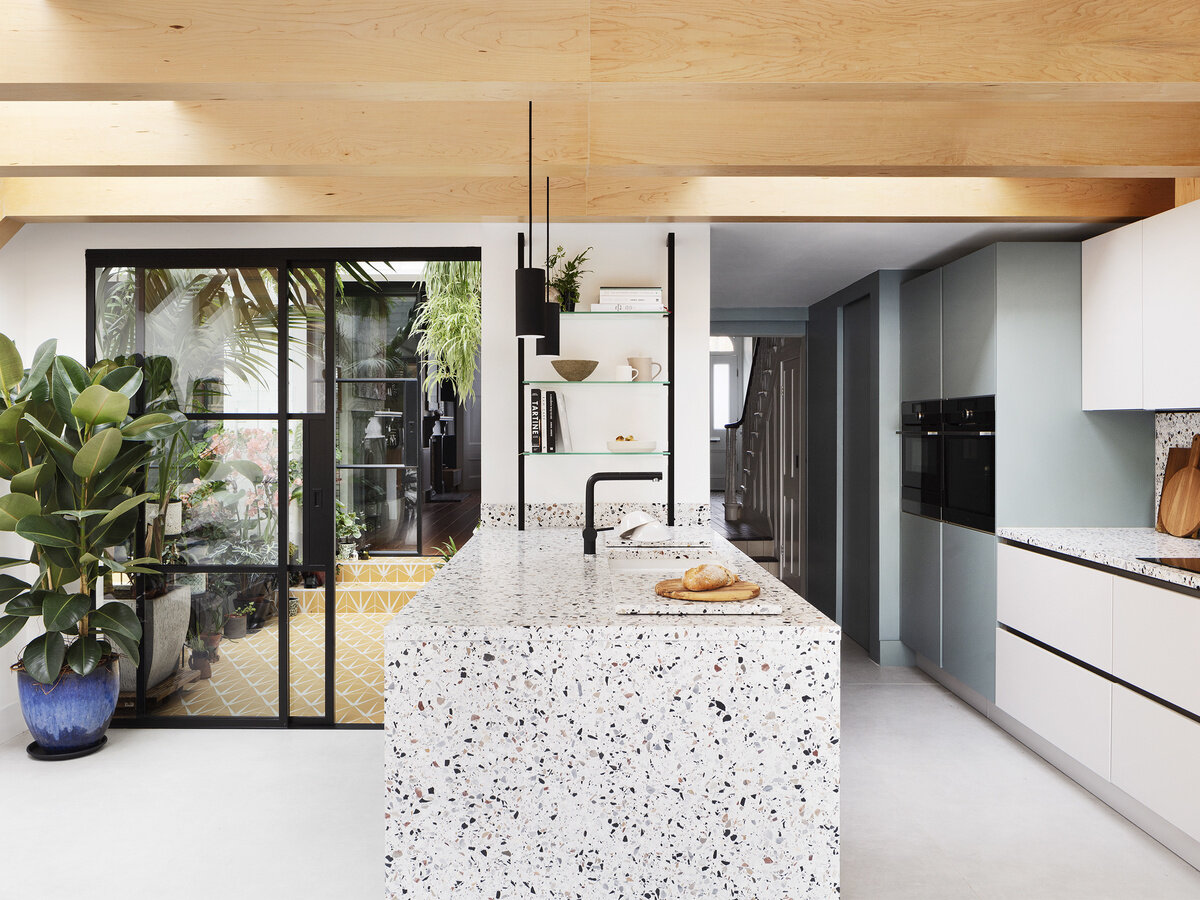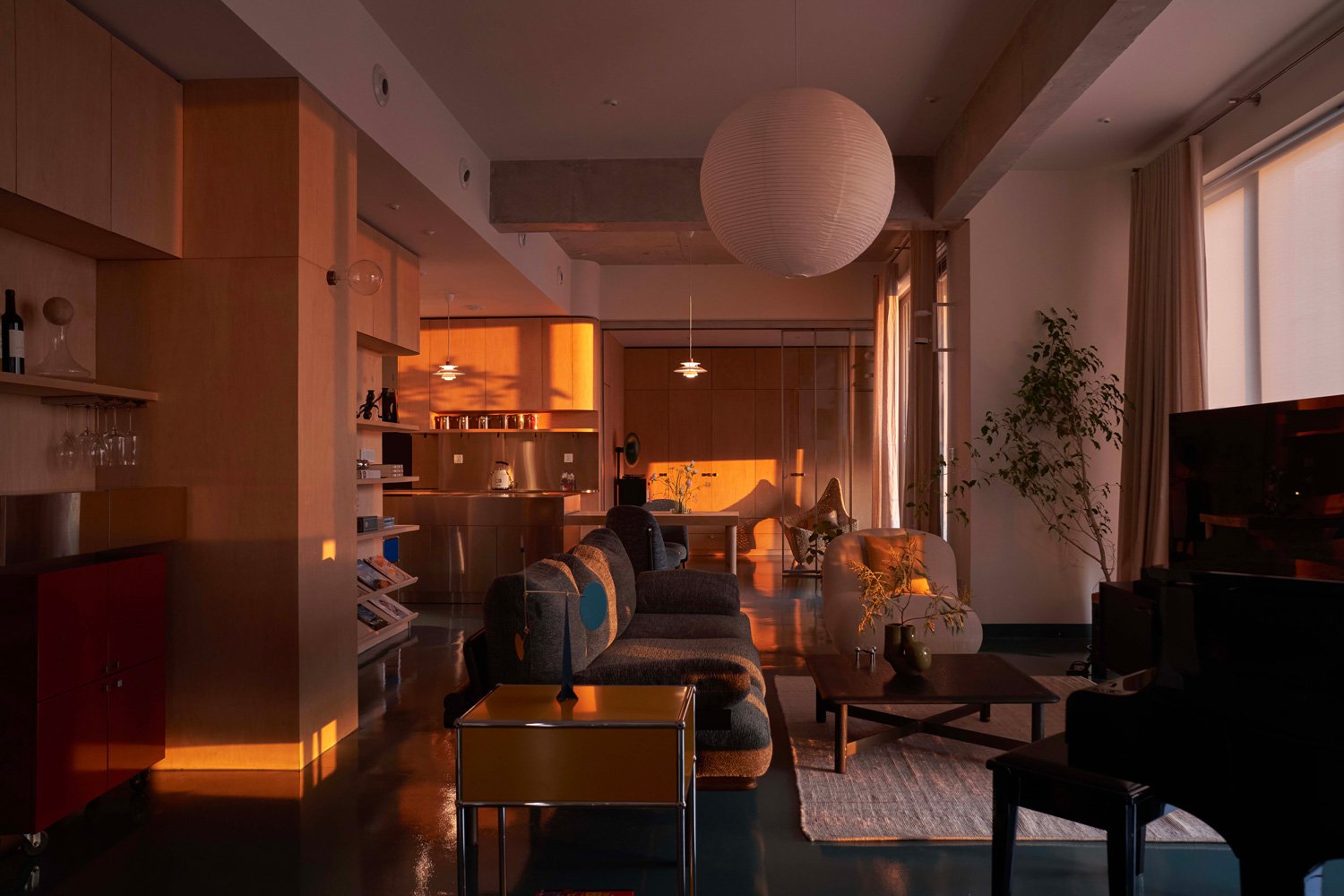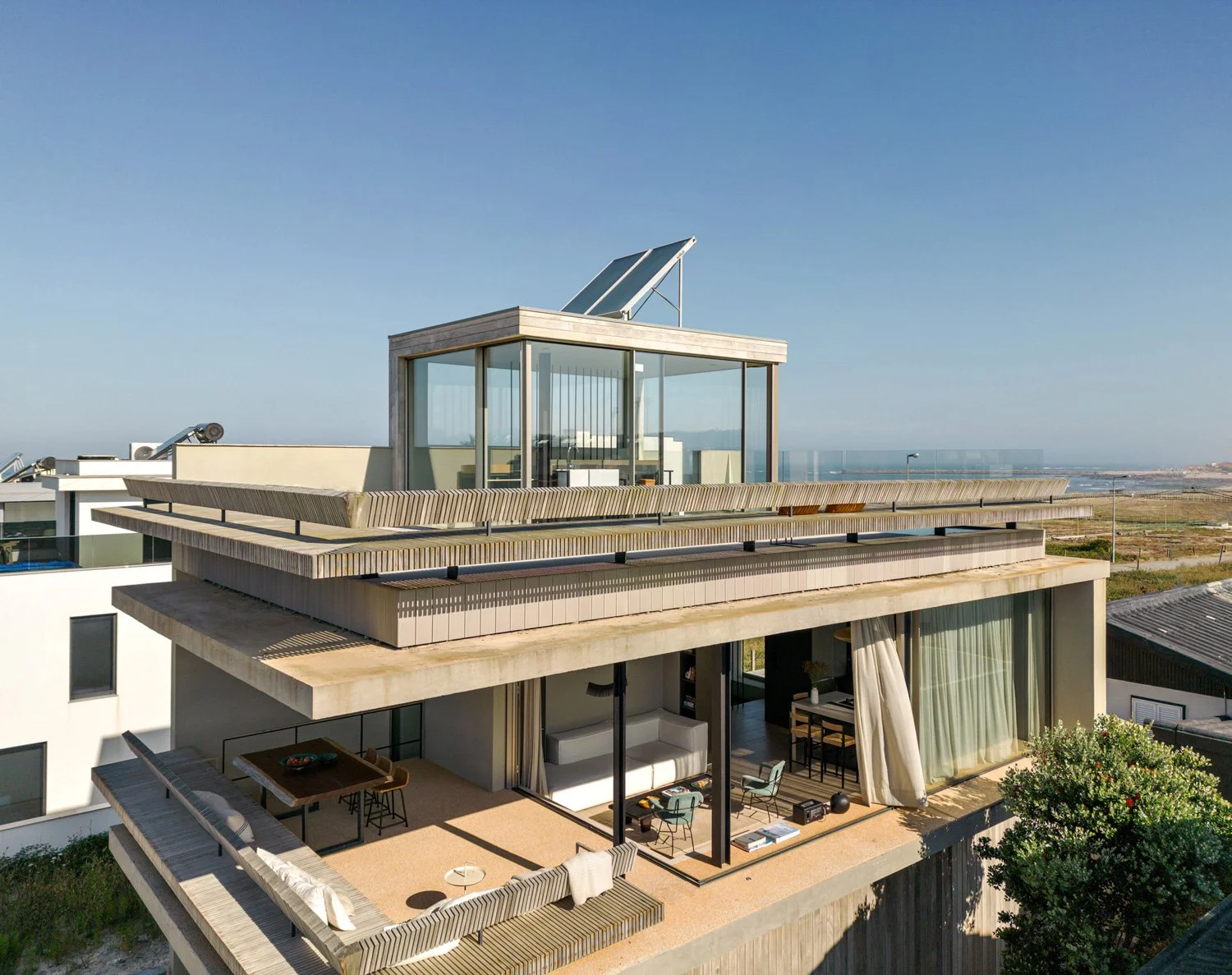STUDIODUO || A Conversation on Designing for Ho Chi Minh City's Evolving Cityscape

Ho Chi Minh, also known as Saigon, is the most populous city in Vietnam. In recent years, the city has experienced an influx of capital, tourists, and new settlers in its core districts.
When I arrived in the city after a short flight from Hanoi, my first impression was the eclectic mix of gleaming high-rises set against the historic colonial buildings in the heart of the city. One of the questions that came to mind was how architects design for the rapidly evolving skyline.
We grab a coffee with Arturo Moreno of Ho Chi Minh-based StudioDuo, who has observed and contributed to the changing fabric of the city for the past decade, to learn about how he got here, what it’s like to set up a practice here and what makes dreaming up architectural projects in Vietnam so exciting.
P: Pendulum Magazine
AM: Arturo Moreno, StudioDuo
P: Many people probably ask you this question: why Vietnam? You're originally from Europe. Right?
AM: Yeah, Spanish. When I finished my studies, it was after the 2008 crisis in Europe. As you may know, we weren't doing well in Europe, especially in the real estate sector, which was one of the main triggers of the crisis. So, Asia was the logical move. I saw the potential. Vietnam was not my first option, though. I visited Laos, Cambodia, Thailand, and Vietnam and fell in love with the country.
P: What were the pros and cons of those other regions you went to that made you feel Vietnam's probably better for you?
AM: A mix of, first, the development of the country. Vietnam has a much bigger development than any other country in the region. Thailand is an exception. Thailand has a strong development for tourism, so they also need architects, but they focus on working with local Thai architects. They don't need the input of foreign firms so much. Vietnam's market is fresher, so they need more input from foreigners. The development was just newer; it was more interesting.
P: I read you worked with some other firms before striking out on your own.
AM: Yeah. One of the reasons I came to Vietnam was to work for my first firm, Mia Design, an excellent Vietnamese firm. Very, very nice. I'm still very good friends with the boss of that firm until today.
Then, I worked a corporate job in a big firm. So, it's very different. I just tried to see if I liked it. I didn't.
P: What is corporate like here in Vietnam?
AM: You do big hotels and everything with operators like Accor and ISG. So, everything is very clear-cut. A bit less boutique, so you have fewer opportunities to do something more original because you have to follow many standards. It's good to know. For my education, it was perfect. But I prefer to have something a bit more risky in terms of design.
P: You have worked on quite a few resorts, and you had full control over the entire project. Were those more creative?
AM: We are working in two resorts right now. One is near completion in Da Nang. It's a boutique resort for private clients. So, pretty much we could control the whole thing. We find operators or a consulting company to prepare the whole concept and operation guidelines for the client. So, yeah, it's much more interesting for that reason.
Chavana boutique hotel, a project by StudioDuo incorporating lush greenery into the design so the project has a living, evolving facade.
P: So, when you take on a new project, do you assemble a team, or how does that work?
AM: We are 15 people right now at the studio. Sarah is the creative director, and she mostly takes care of the interior. And I'm the principal architect. So, I focus more on the space creation and the architecture. And then, we have a team of excellent Vietnamese designers.
P: How did you recruit for your team when you first started?
AM: Initially, we relied on referrals because we started small. We had three employees at the beginning. And then, little by little, honestly, we didn't look for so much because we got reputations. People contact us. We have quite a lot of candidates every time. So, we have ample opportunities to choose from the best. We are quite lucky in that sense.
P: What do you find unique about Southeast Asian architecture? Compared to European or North American architecture, what makes Southeast Asian architecture unique?
AM: I mean, I wouldn't categorize Southeast Asian architecture as one architectural type. It's very different. I'm from Spain. I wouldn't say Spanish architecture is similar to French architecture. Although there are many similarities, there are a lot of differences, too. Some have to do with culture. Some with constructive solutions. Some with material availability. So I would say that, for example, Thailand and Cambodia are very distinct from everyone else. They have the most characteristic architecture. Vietnam, in general, especially Central Vietnam, has a huge heritage from the Champa Empire. So it's bricks and monolithic architecture. That's the more traditional architecture from Vietnam. But in general, the main buildings are related to religion. You can see the Buddhist touch on all of them. But again, Cambodia, all the Khmer ancestry, you can really see it on their buildings even today. And Thailand, of course. It's super flavorful, the architecture.
Vietnam has something very interesting going on because it embraces the new wave of modernism, tropical modernism. And the shophouse is a very interesting typology of the shop. You can see the little, very narrow, 4 to 5-meter house. And very long. Normally 20 to 30 meters. So that typology, because it's a very complex shape, you have to find ways to have ventilation and the lighting going on. That typology for Vietnam is very, very interesting. You have excellent local architects that have very interesting types of architecture.
With such elongated plots and sites, some of the common elements would be a front yard, back yard, so there's ventilation going through. And then skylights as well. Skylights in the middle. It's very interesting.
Clay Saigon, a restaurant by StudioDuo in Thao Dien, is an exemplary example of the team’s philosophy of blending the indoor-outdoor space and using design elements to facilitate ventilation.
Clay Saigon’s patio offers an unrivalled riverfront view.
P: Have you incorporated some of these elements into your style?
AM: First of all, the materials. We always like to work with local materials.
Two reasons why. The first reason is just environmental. It's more sustainable to use local materials. The carbon footprint of the building is reduced just because of that; you don't have to ship marble from Italy, for example. The second reason is that if you use local materials, you will already have a local flavour in your building automatically.
We love to collaborate with local craftsmen, especially for the interior. For the architectural design, I follow a bit more the passive house style of German architecture. That's, again, for sustainability.
We make sure the sunlight isn't direct inside the building, so you don't have to use a lot of AC to cool it down. But for the interior, we use a lot of local materials. Look at bamboo. I love what they do here with bamboo weaving and everything. You can see in our project, Clay Saigon, that the ceiling is custom-made by local artists.
P: With spaces like Clay, indoors and outdoors blend together. Can you share your design process for that project?
AM: The indoor and outdoor is something we really like to do in our projects. We don't like AC. It's not really necessary. If you go to Bali, for example, it's all open. Resorts are all open, and it's hotter than here. Bali gets way hotter than here. So when I arrived in Vietnam, I was like, why? Why do you like AC? You have an amazing landscape. If you have a breeze and a fan, it's enough. You don't need AC.
The project includes a brick wall by the river, and the design is such that it is open from its entrance to the river to let air through and cool the space. The connection of the in and out facilitates ventilation and avoids the use of AC.
For Clay specifically, the cuisine is Mediterranean. And that was the concept at the beginning. So we knew we had to do something Mediterranean. The white with the wood is something we do in Spain and Greece. On the roof, you have different structures with different heights. And that's kind of emulating the little houses. We decided to call the design style for the project Spicy Mediterranean. Then, we add the Vietnam touch to that. The red walls symbolize chilli, which is called ớt in Vietnamese.
And the lush landscape. The lush landscape is something that I always took advantage of the opportunity to use. Because in Spain, where I'm from, it's very difficult to maintain the landscape. Six months of the year, you have no landscape. Of course, because it's winter. But here in Vietnam, it's green year-round. So I never miss the opportunity to use lush landscapes in the city.
Brix, one of the first restaurant projects in the Thao Dien area. Designed by StudioDuo, the airy, open design blurs the line between indoor-outdoor dining spaces.
P: What's the timeline for getting a project built [here in Vietnam]?
AM: In general, the pace is extremely fast. Especially when you design for hospitality, because in hospitality, they are paying high rents, and they want the project to make money as soon as possible. We are building a new project that we started designing in January and we are going to do the handover today. It's a restaurant, but it's not very big. It's like a 500-square-meter restaurant.
P: So it's a fast-paced environment that would be good for creative people who can manage that pace.
AM: Sometimes I wish that they took a little bit more time as well because even for us, if we get one more month, for example, in the design stage, it's better.
We get more chances to experiment with different shapes. But I'd rather have that speed and get things built rather than stay on the paper for years.
P: Let's talk about the pace of the work here. Many people don't know what Vietnam is like. What's the day-to-day like for you? Is it a 9-to-5, or is it a 9-to-9?
AM: It really never ends.
Like you wish. It's not like in Europe. Here, there is no work-life balance. There is siesta. Here, half an hour, always. Normally in Vietnam, the companies give one hour. My staff asked me at the beginning, 'can we have one hour and a half so we can get a proper nap?' I said, okay, up to you guys.
P: Is it normal here to have lunch and then a nap?
AM: Yeah, always. At the beginning, I was very surprised. But they do it very well. They bring the sleeping bags and everything.
In Vietnam, everybody does that—all the companies.
But it's different, especially for us as business owners. Saturdays and Sundays are nonexistent. The clients, because they don't have that rest time, text you anyway. But even the staff, like our staff, go into the office on weekends. I said, what are you doing here, guys? They said, no, we didn't have anything to do. We came here to work.
They really love working. They are very... In Vietnam, one of the things that I like the most is something that I saw at the beginning. They are very entrepreneurial. All the staff have the primary job and do their side hustle at night. Their attitude is very open, and they're always wanting to learn. It's a young country. I think the people are hungry.
You can see they are hungry. It's not like the comfort we have in Europe and North America. This generation is the same as the baby boomers. This is the spirit of the whole country. And you can see it. And I love it.
P: How many more years do you think are sustainable for you when you're constantly go go go?
AM: I'm a workaholic. I think we have a plan to go somewhere else but we will always keep business in Vietnam. Open another practice probably in South or Central America. Yeah. But Vietnam will always hold a place in our hearts.
P: So, [Saigon] is a second home for you.
AM: Yeah. I mean, I honestly love the city, and the people here are amazing. In Saigon, it's perfect for me. The people here are quite Spanish in how they like to go out. They want to eat constantly.
It's not tapas, but kind of. So, Saigonese is actually quite like Spanish. So, I feel at home.
P: Yesterday was my first time here in District 2. Restaurants line the streets here. My friends told me it's only really started and it was a swamp 16 years ago when they came.
AM: When we opened the Brix, it was the first proper restaurant on that street, on the whole street. And then, in a matter of one and a half years, it was just popping up everywhere. There are like 20 restaurants. So, it's like that.
Before, it was just a sleeping city, and people made their lives in District 1. During COVID, people had to stay here. And they got used to staying here. People just stopped seeing a reason to go back to District 1 anymore because they could live and work here. So, District 2 is very nice, but it's a bit of a trap in that if you live here, you can get very comfortable and never leave District 2. Because you have everything. Like, you don't need to pass by District 1 anymore.
But it's very recent. It's very, very recent.
P: How about beyond restaurant projects [in District 2]? I see from the portfolio your team also works on resorts, residential projects, and boutiques. Is there a specific type of project that you prefer working on?
AM: There is one thing that is very true. There are no good architects, only good clients. So, that's the first thing. The most important thing is the client. If the client fits and builds on top of your ideas, then the collaboration is successful.
Fortunately, most of our clients are like-minded. They like our style. We don't like to compromise so much. When we do something, we do it with passion. We really like what we are doing. So, to do something dull, we prefer not to do anything at all. So, that's one thing. For us, what we like is to work actually with people, not with corporations. Like someone who is very into the project, and then they become friends. So, that can be any [type of project]. For the restaurants you have seen, it's one private client. We are excellent friends with them. For the hotel, the same. They are lovely. We like to do a lot of penthouses as well because you don't have to please anyone.
A private villa designed by StudioDuo. Arturo confesses these types of projects allow him to fully unleash his creativity when the client is on board.
When we do restaurants, you have to think… Who are the consumers? You have to cater to people. When you are doing a villa, you don't have to. It's just wild imagination. Some of our clients want something very impressive. And they are ready to go the extra mile for it. And then, we have amazing projects. We have a couple of penthouses here in District 2 that won many awards. Sadly, they are not as visible, so people don't know much about them because they are private residential.
Our conversation continued to flow into our love for architectural tomes by art book publishers like Taschen and Rizzoli and how we can never find enough suitcases to bring back our favourite volumes. It was then time for Arturo to jet off to his next meeting in another part of the city. Through our brief chat, I discovered many insights into the culture and its youthful population and what it's like to run an architectural practice in Vietnam, from the lightning-fast speed of a complete buildout to navigating cultural nuances in recruitment and retention. At this pace, the StudioDuo team would have left their mark across more parts of Vietnam with their neighbourhood-defining restaurants and skyline-defining hotels and resorts by my next visit. I took the last sip of my now-melted latte and stepped out into the beating heat of the tropical monsoon season.





